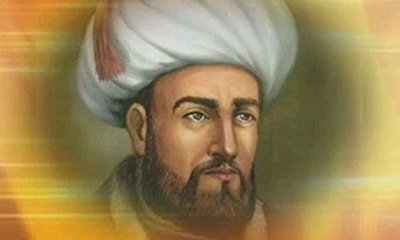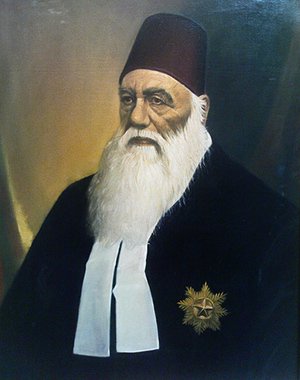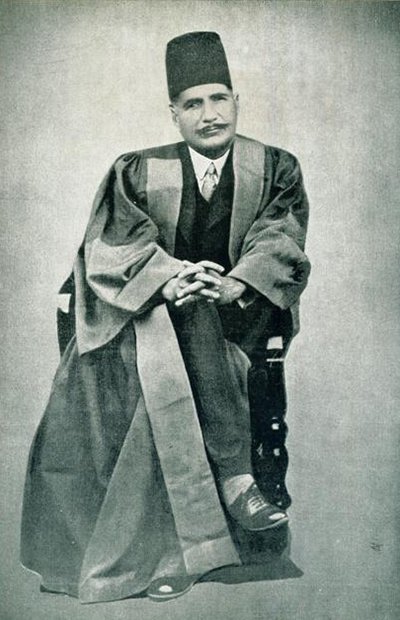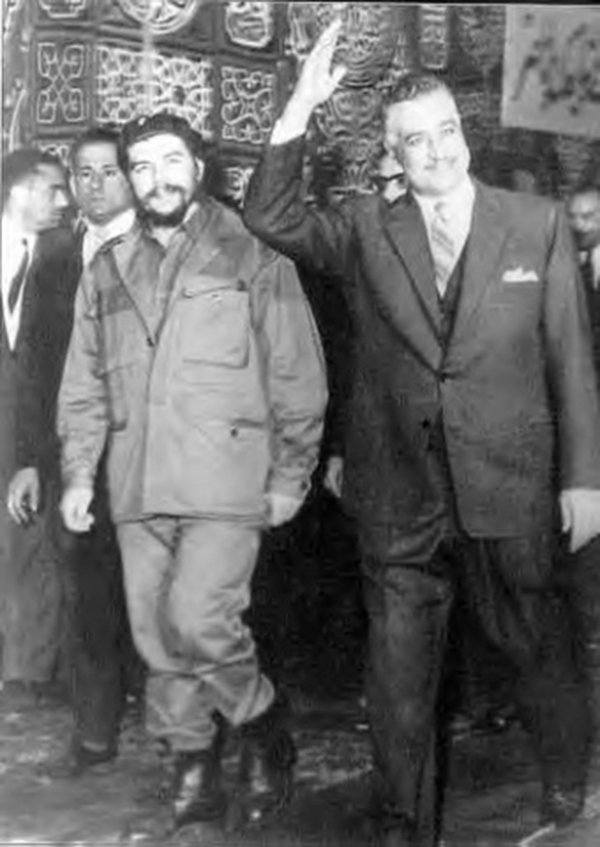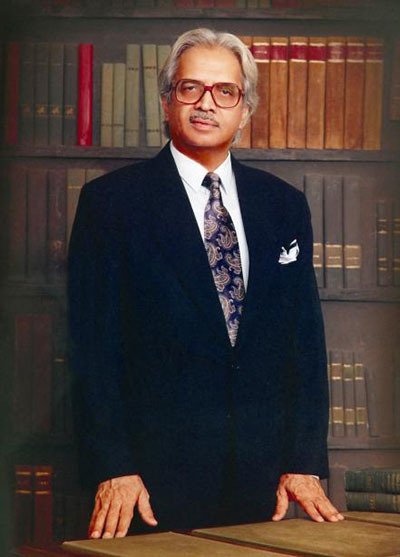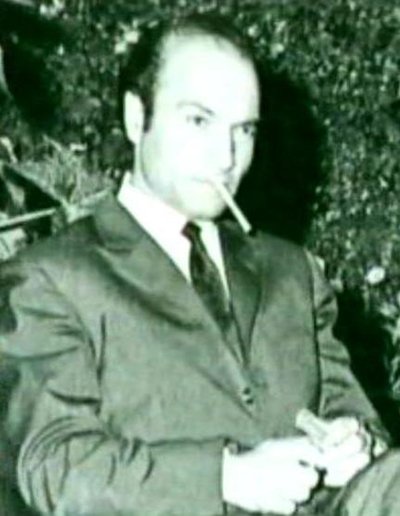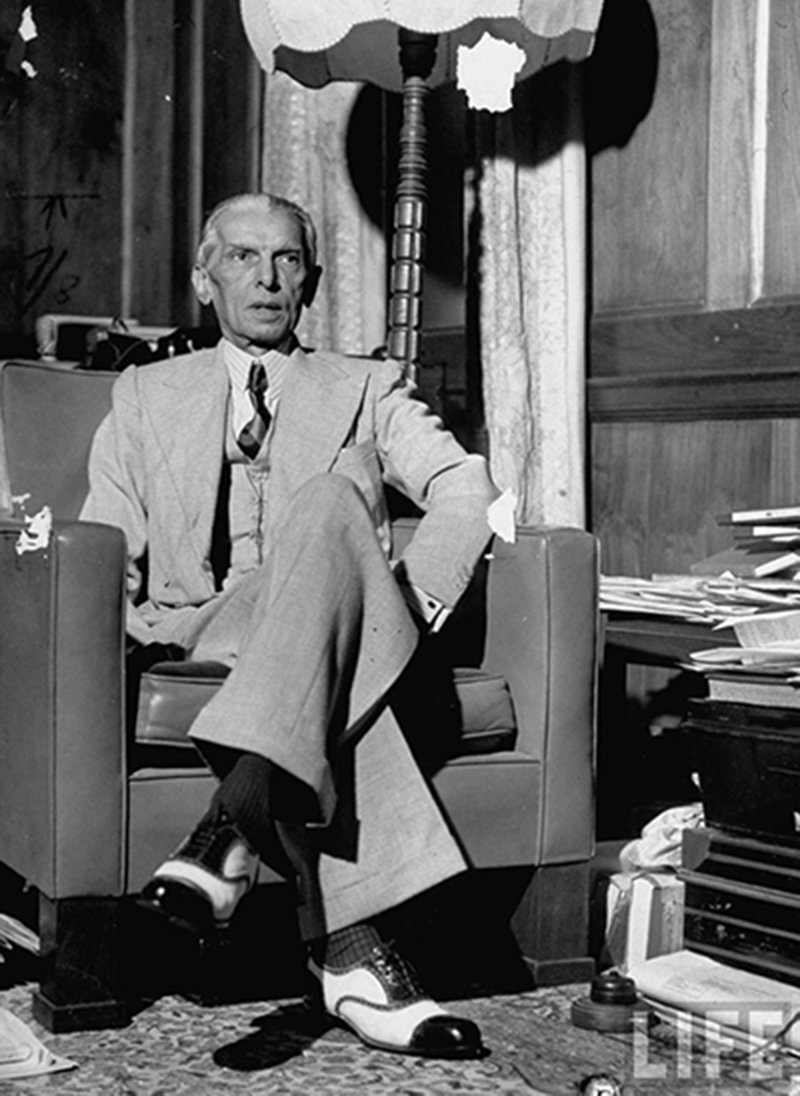Thread
#ThePoliticalIslamanditsEvolution
Read for all who are interested to know about relationships of Islam with politics, historical perspective, and why Muslims failed to establish a political model to ensure integrity and exclusiveness but acceptable to others.
#ThePoliticalIslamanditsEvolution
Read for all who are interested to know about relationships of Islam with politics, historical perspective, and why Muslims failed to establish a political model to ensure integrity and exclusiveness but acceptable to others.
The term ‘Political Islam’ is an academic concoction. It works as an analytical umbrella under which political analysts club together various political tendencies that claim to be using Muslim scriptures and historical traditions to achieve modern political goals.
The term most probably emerged in the 1940s in Europe, to define anti-colonial movements that described themselves as Islamic in orientation. It is a 20th century construct and its first prominent expression is believed to be Egypt’s Muslim Brotherhood, formed in 1927.
Even though as a political tendency, Political Islam covers a wide range of movements involving various Muslim sects, sub-sects, nationalities, leftist as well as rightist rhetoric and narratives; it is the commonalities in these varied movements that make analysts study
them as a single ideological entity.
There is a rightist and a leftist side of Political Islam.
Till about the late 1960s, movements associated with rightest aspects of Political Islam were largely intellectual pursuits with limited political influence.
There is a rightist and a leftist side of Political Islam.
Till about the late 1960s, movements associated with rightest aspects of Political Islam were largely intellectual pursuits with limited political influence.
They were seen with suspicion, even by those movements and groups that adopted the main aspects of Political Islam and fused them with varied leftist ideologies.
Thus one can also suggest that during the Cold War era (1949-90), the central theological and political tussle in most Muslim countries was not exactly between ‘Islamists’ and secularists, or between religious political groups and communists;
the main conflict was between the rightest expressions of Political Islam and its leftist versions.
The rightist side produced tendencies such as ‘Islamic Fundamentalism,’ ‘Islamism’ and ‘Neo-Fundamentalism,’
The rightist side produced tendencies such as ‘Islamic Fundamentalism,’ ‘Islamism’ and ‘Neo-Fundamentalism,’
while the leftist sides came up with ‘Islamic Socialism,’ ‘Ba’ath Socialism’ and ‘Arab Nationalism’/‘Arab Socialism’. Balanced at the centre was Muslim Nationalism
During the Cold War, the rightest expressions of Political Islam were backed and supported by Western powers and oil-rich Arab monarchies, mainly due to the fact that the leftist sides of Political Islam had largely moved into what (during the Cold War) was called the Soviet camp
The rightist sides were severely repressed by Muslim regimes operating from the left flanks of Political Islam, but it is also true that the right-wing of Political Islam had by and large failed to attract any worthwhile mass support.
However, things in this respect began to change from early 1970s onwards. The right-wing expressions of Political Islam experienced a surge, especially after the death of popular Egyptian leader and ‘Arab Socialist,’ Gamal Abdul Nasser in 1970.
Later, the bankrolling of the anti-Soviet ‘Jihad’ in Afghanistan by the US, Saudi Arabia and Pakistan in the 1980s, also became a catalyst for shifting of political and social influence in many Muslim countries from left-leaning Political Islam to its rightist expressions.
The ‘Afghan Jihad’ also added a more militant dimension to right-wing Political Islam. It reached a peak in the late 1980s after the Afghan conflict resulted in a stalemate and the Soviet forces in Afghanistan had to pull out.
In the early 1990s, encouraged by their successes in Afghanistan, the militant expressions of right-wing Political Islam began to pull away from the orbit of its former backers (US, Saudi Arabia, Pakistan), and tried to trigger ‘Islamic revolutions’ in various Muslim countries.
Their methods of creating chaos through bombings (to unleash an uprising) antagonised the regimes that had formerly backed them, but now found themselves under attack.
Meanwhile, the more classical expressions of right-wing Political Islam have tried to repair the damage inflicted to their cause by their more militant cousins, by getting involved in the democratic process in countries like Pakistan, Egypt, Tunisia, Indonesia, Sudan, and Turkey.
But on most occasions ‘moderate’ right-wing democratic expressions of Political Islam have proven to be more successful on the social front, but lack the acumen required to devise and implement coherent economic policies or act decisively against their more violent brethren.
So can one cautiously ask whether the Political Islam that emerged in the 1930s-40s and then peaked in the 1980s, is now a withering phenomenon?
The answer to this can be looked up in the historical trajectories of some of Political Islam’s more prominent outcomes.
The answer to this can be looked up in the historical trajectories of some of Political Islam’s more prominent outcomes.
#TheFirstTriangle
The earliest manifestations of Political Islam were the so-called Islamic Fundamentalism, Pan-Islamism and Muslim Nationalism.
The earliest manifestations of Political Islam were the so-called Islamic Fundamentalism, Pan-Islamism and Muslim Nationalism.
#IslamicFundamentalism' is a vague term. It is largely associated with various radical and militant tendencies found in the Muslim world, nut critics of this definition claim that it only means the following of the ritual fundamentals of Islam.
So, though usually attributed to the beliefs of modern-day extremist movements in the Muslim world, Islamic Fundamentalism is basically a firm belief in the theological musings of classical Islamic jurists and traditions.
Islamic Fundamentalism is rooted in this 12th Century intellectual triumph of traditionalists. 12th century Islamic thinker, Imam Ghazali, who advocated an end to 'ijtihad' (independent reasoning) with the view that Islamic thought had reached completion.
Islamic Fundamentalism continues to be frozen in an understanding of the faith and its texts developed centuries ago by ancient Islamic scholars and jurists.
Though it is vocal in its rhetorical demands for the imposition of ‘Islamic laws’ (Shariah), it has no political agenda.
Though it is vocal in its rhetorical demands for the imposition of ‘Islamic laws’ (Shariah), it has no political agenda.
#MuslimNationalism was perhaps Political Islam’s first major modern manifestation (along with Pan-Islamism). Both emerged in the 19th century as critiques of classical Islamic Fundamentalism which they accused of being apolitical, frozen in time and anti-progress.
Both were also the reactive products of the rise of European colonialism. Pan-Islamism viewed the Muslims across the world as a single entity (ummah) that should be united under single ‘Islamic state’ (a global caliphate).
Pioneering #Pan_Islamic thinkers such as Jalaluddin Afghani (1839-97) were perhaps the first to allude to the creation of an ‘Islamic State’ (albeit a universal one).
It was a concept culled from the Western idea of the state and then furnished with the theory that the governmental set-ups in Makkah in the 7th century during the initial rise and triumph of Islam were organic ‘Islamic States.’
Pan-Islamism was in fact critical of Muslim Nationalism that was being shaped by men like Sir Syed Ahmed and Syed Ameer Ali. For example, Afghani accused Muslim Nationalists (in India) of attempting to confine the Muslims of India as a group defined by their geographical location
Pioneering 19th Century Pan-Islamic thinker Jalaluddin Afghani. he advocated the infusion of modernity in traditional Islamic thought, he was critical of India’s Muslim Nationalists because he thought they were reducing the Muslims of South Asia as a nation confined to South Asia
Pan-Islamism and Muslim Nationalism were also equally interested in popularising modern (European) models of education among Muslims, and of advocating a more ‘rational’ understanding of Islam’s scriptures. In this context, they were both progressive ideas
But Muslim Nationalism largely remained an urban and reformist phenomenon associated with the Muslim bourgeoisie of India. It was further elaborated and bolstered by the scholarly works of philosopher and poet Muhammad Iqbal
By the 1930s, it had become the central plank of the All India Muslim League.
Muslim Nationalism thus became the main driver behind the movement that created Pakistan (in 1947), because it advocated the formation of a separate country for the ‘Muslim nation’ of India.
Muslim Nationalism thus became the main driver behind the movement that created Pakistan (in 1947), because it advocated the formation of a separate country for the ‘Muslim nation’ of India.
Poet-philosopher, Muhammad Iqbal (1877-1938), tried to bridge the universalism of Pan-Islamism with the Muslim nationalist identity that South Asia was trying to shape up.
In the 1930s and 1940s, Muslim Nationalism came under attack once again, this time by Pan-Islamism’s more conservative expressions
In fact, it would be these expressions which would evolve to become so-called Islamism. Early architects of this aspect of Pan-Islamism, such as prolific Islamic scholar, Abul Ala Maududi, attacked Muslim Nationalism of being a ‘western idea’ and too ‘secular’ in orientation
He also attacked it for compartmentalising the Muslims of India as an artificial South Asian entity, thus negating the universality of Islam.
However, the process of a compromise between Muslim Nationalism and the ‘universal’ ideals of Islamism began almost immediately after the creation of Pakistan.
By the mid-1970s, Muslim Nationalism’s disposition had begun to shift from the centre and towards the right. And by the 1980s, it had largely incorporated into its fold Islamism’s many notions,
turning the idea of Pakistan from being a nationalistic Muslim-majority state into a state striving to become ‘the epicentre of the ummah.’
#DecentintoMadness
Neo-Fundamentalism in Political Islam is a tendency that aims to politicise and radicalise the social and cultural aspects of Islamic Fundamentalism.
Neo-Fundamentalism in Political Islam is a tendency that aims to politicise and radicalise the social and cultural aspects of Islamic Fundamentalism.
The term was popularised by French author, Oliver Roy, who suggested that Neo-Fundamentalism rose with the emergence of the Taliban in 1996 (in Afghanistan and Pakistan), and began filling the void created by the post-Cold War weakening of Islamism.
Like traditional Islamic Fundamentalism, Neo-Fundamentalism too maintains that there is no room for reason in the act of understanding religious texts that are to be understood literally.
However, unlike Islamic Fundamentalism, Neo-Fundamentalism looks to impose laws, morality and piety by force and through armed struggle (and through the creation of an ‘Islamic Emirate’).
Apart from the Taleban, Roy also describes outfits such as Al Qaeda and various modern militant and sectarian groups that emerged in its wake as Neo-Fundamentalist (including the recent emergence of the Islamic State (ISIS).
Where Islamic Fundamentalists use concentrated evangelical tactics to supposedly ‘cleanse Muslim societies of un-Islamic practices,’ Neo-Fundamentalists use coercion.
Neo-Fundamentalism has further narrowed its world view to become a squarely anarchic tendency that in the last decade has exhibited extreme displays of religious and sectarian xenophobia and violence.
It is also devoid of the rich intellectual tradition associated with Islamism, settling instead for radical polemical literature that advocates violent action and an extremely narrow and polemical worldview.
Some observers have defined Neo-Fundamentalism as an anarchic and desperate symptom foretelling the final, violent collapse of Political Islam.
#Theleftflank
One of the strongest among the left-leaning tendencies of Political Islam was dubbed Islamic Socialism. As a term it was first used by the Muslim Socialist community in Kazan (Russia) just before the 1917 Communist revolution there
One of the strongest among the left-leaning tendencies of Political Islam was dubbed Islamic Socialism. As a term it was first used by the Muslim Socialist community in Kazan (Russia) just before the 1917 Communist revolution there
Staunchly anti-clerical, the community supported communist forces but retained its Muslim identity.
The term then became popular among some left-leaning Muslim Nationalists of the All Indian Muslim League.
The term then became popular among some left-leaning Muslim Nationalists of the All Indian Muslim League.
After the political successes of Arab Socialism and Ba’ath Socialism (in the 1950s and 1960s), the idea of Islamic Socialism also gained currency in Pakistan, Algeria, Indonesia, Sudan, Somalia, Yemen and Libya.
The National Liberation Front that led Algeria’s independence from France (1962) described itself as a follower of Islamic Socialism, and so did the populist Pakistan Peoples Party in Pakistan.
Libya too began calling itself an Islamic Socialist state after Muammar al-Gadhafi toppled the Libyan monarchy in a coup in 1969. Yasser Arafat’s Palestine Liberation Organisation (PLO)
also described itself as being Islamic Socialists, and during the same period (late 1960s/early 1970s) Islamic Socialists also came to power in Pakistan, Sudan and Somalia.
(Poet, painter and author, Hanif Ramay, is considered one of the main ideologues and theorists of modern Islamic Socialism in Pakistan. He was one of the founding members of PPP.)
In Iran, radical anti-Shah militant organisations that fused Islamic symbolism with Marxist/socialist ideas also appeared. They took an active part in the 1979 Iranian Revolution, but were then eliminated or banished by the new Islamic regime.
Iranian thinker and activist Ali Shariati expressed revolutionary Islam through Marxist symbolism. He was assassinated in 1975 by the agents of the Shah of Iran.
Islamic Socialism was vehemently attacked and criticised by conservative Muslim monarchies, as well as by those forces associated with Islamism.
The charisma attached to Islamic Socialism began to wither after the death of Nasser in 1970, and when most Muslim countries began coming closer to the conservative oil-rich Arab monarchies.
The last major expression of Islamic Socialism was the (Soviet-backed) ‘Saur Revolution’ in Afghanistan in 1978, led by the People’s Democratic Party.
#TheLastBastion
Though many liberal Muslims consider 8th and 9th century Islamic rationalists (the Mu’tazilites) to be the first philosophical expressions of Liberal Islam, in the political context,
Though many liberal Muslims consider 8th and 9th century Islamic rationalists (the Mu’tazilites) to be the first philosophical expressions of Liberal Islam, in the political context,
Liberal Islam too is a late 19th/early 20th century creation (despite the fact that there is historical accuracy in the claim that major Muslim empires of yore were already largely pluralistic and non-theocratic).
Again, in the political context, Liberal Islam can find its roots in some 19th century reformist movements and in the way Muslim countries such as Iran, Afghanistan and Turkey adopted western economic and social models in the early 20th century.
The emergence of the nationalist movements in the Muslim world too gave impetus to the thought attached to Liberal Islam, and so did the coming to prominence of effusive ideologies such as Islamic Socialism.
The founder of modern Turkish nationalism, Kamal Ataturk, was one of the staunchest expressions of Liberal Islam (in the political context).
Liberal Islam has been a flexible entity. Sections in both the anti-West as well as pro-West segments in the Muslim world profess it, with the anti-clergy factor being the common link between the two.
Many democratic political parties of the left and of the right and also authoritarian regimes in the Muslim world can be termed as having liberal views about Islam’s political role.
These parties and regimes are highly suspicious of the clergy and repulsed by the political ambitions of Islamism and Neo-Fundamentalism.
They encourage #ijtihad in matters such as the understanding of the Quran and Shariah, and emphasise that Islam is best served through religious institutions instead of through the state and the government.
An emphasis on multiculturalism, nationalism and democratic pluralism too is made, even though, as mentioned earlier, some Liberal Muslim organs have been authoritarian as well.
The founder of Pakistan, Mohammad Ali Jinnah, tried to bridge the political gap between Muslim Nationalism and Liberal Islam in South Asia.
Most mainstream political parties in the Muslim world today can be said to be following various degrees of Liberal Islam. Not all of them are secular in the western sense of the word,
but they are flexible in their outlook towards matters such as the Shariah, and concepts and practices that are deemed as ‘un-Islamic’ by their more conservative opponents.
References:
Oliver Roy, The failure of Political Islam (Harvard University Press, 1998) p.2
Muhammad Ayoob, The Many Faces of Political Islam (University of Michigan, 2007)
Roger Hardy, The Muslim Revolt, (Harsh Publishers 1999) p.18
Oliver Roy, The failure of Political Islam (Harvard University Press, 1998) p.2
Muhammad Ayoob, The Many Faces of Political Islam (University of Michigan, 2007)
Roger Hardy, The Muslim Revolt, (Harsh Publishers 1999) p.18
Ziauddin Sardar, Islam, Post-Modernism & Other Futures (Pluto Press 2001) p.100
Martin Kramer, Fundamentalists or Islamists? (Middle East Qutarly, 2003) pp.65-70
Abdullah Saeed, Freedom of Religion & Islam (Ashgate Publishing, 2004) p.90
Martin Kramer, Fundamentalists or Islamists? (Middle East Qutarly, 2003) pp.65-70
Abdullah Saeed, Freedom of Religion & Islam (Ashgate Publishing, 2004) p.90
James Toth, Syed Qutb (Oxford University Press, 2013) p.324
Nadeem F. Paracha, Islamic Socialism: A history from left to right ( http://DAWN.COM , February 21, 2013)
With special thanks to
Nadeem F. Paracha
Nadeem F. Paracha, Islamic Socialism: A history from left to right ( http://DAWN.COM , February 21, 2013)
With special thanks to
Nadeem F. Paracha

 Read on Twitter
Read on Twitter